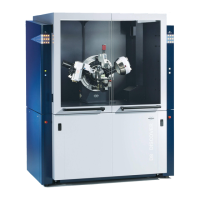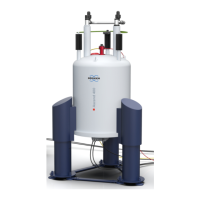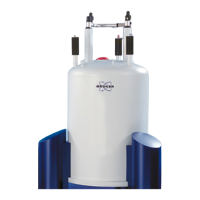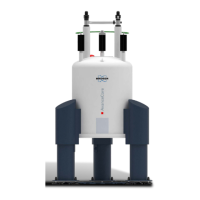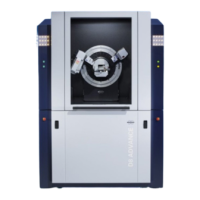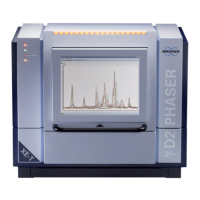Safety
H157654_9_011 17 / 120
2.4.2 Liquid Nitrogen Refills
Keep contact with air at a minimum. When liquid nitrogen is exposed to air, it can con-
dense and become as hazardous as liquid oxygen. The pressure relief valve for the nitro-
gen vessel should be mounted at all times, even when the vessel is being refilled. Special at-
tention is required for the transportation of cryogens by elevator, no one should be al-
lowed to be in the elevator with a cryogen dewar.
When the vessel is being refilled, liquid nitrogen should not be allowed to spill onto the room
temperature bore closure flanges. Place gum rubber or Teflon tubes on the nitrogen neck
tubes during refill. The transfer should be stopped immediately when the vessel is full. Failure
to observe this can lead to the freezing of the O-rings and a subsequent vacuum loss of the
magnet cryostat.
The liquid cryogen transport dewars used to refill the magnet must be of the low pressure
type. Never use high pressure gas-packs. The dewar must have a fixture for pressurizing
and transferring via a stainless steel or corrugated plastic tube (10 mm inner diameter).
Where possible the dewar should be self pressuring. The typical transport dewar pressure for
transferring liquid nitrogen is 0.10 - 0.20 bar (1-3 psi), the maximum 0.35 bar (5 psi).
The refill procedure is described in detail in the magnet manual. For further information on liq-
uid nitrogen requirements, refer to the chapter Liquid Nitrogen Requirements [}70].
2.4.3 Liquid Helium Refills
Liquid helium is the coldest of all cryogenic liquids, therefore it will condense and solidify any
other gas (air) coming in contact with it. The consequent danger is that pipes and vents may
become blocked with frozen gas. Vacuum insulated pipes should be used for transferring liq-
uid helium.
Liquid helium must be kept in specially designed storage or transport dewars. A one-way
valve is supplied to avoid air or moisture from entering the helium vessel. This is to prevent
ice from building and plugging the neck tubes. The 0.2 bar valve must be mounted at all
times even during a helium transfer.
Often, permanently installed helium gas lines are used to pressurize the liquid helium trans-
port dewars during the helium refills. Alternatively, helium gas cylinders can be used. The he-
lium gas cylinder should never be brought close to the magnet and should always be kept
well outside the 5 Gauss line. The gas cylinder should be secured to a wall or structural col-
umn well outside the 5 Gauss line to prevent a dangerous accident. A He gas purity of 4.6
(99.996%) is recommended.
The refill procedure is described in detail in the magnet manual.
CAUTION
Danger of cold burns or freezing during the transfer of liquid helium.
During the transfer of liquid helium it is possible that cold burns or freezing may occur.
u The transfer of liquid helium can be done easily and safely, provided the helium transfer
line is in good condition, is handled correctly, and the transfer pressure does not exceed
3.5 psi (0.24 bar).
u Never connect a warm helium transfer line to the magnet as the warm helium gas could
disturb the magnet temperature.
u Always allow the helium transfer line to cool down to helium temperature before
connecting it to the short end inserted into the helium fill port.
u Adequate protection and clothing is required at all times when handling, transferring, or
operating near cryogenic fluids.
